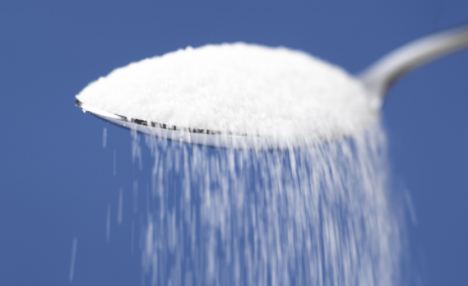If you are like me, you might be a little skeptical when you first hear that sugar can be used medicinally, but I’m not getting my medical advice from Mary Poppins, this is real. My dog got in a fight not too long ago, and had a sizeable chunk of flesh torn from his shoulder area (he’s ok though), when I took him to the vet I tried to explain that I only wanted him to get what he really needed since I couldn’t afford to over treat him and he gets himself into trouble all too often (yes I control my animal, but I lived in a rural area with lots of feral pigs that he loves get into it with). I was surprised when the vet told me that he would be fine if I just applied sugar to the wound. I didn’t believe this, so I looked it up prior to treating him and it turned out to be true, and it worked, here’s how to do it.
- The sugar is applied topically (to the skin) and not orally. Sugar taken orally will not help fight off an infection and can instead make things worse providing easily consumed food for the invading enemy.
- The bleeding must be stopped prior to applying the sugar. Applying sugar to a bleeding wound can interfere in the clotting process.
- Sugar can first be used to irrigate the wound by dissolving it in water and using a gentle flow from a squeeze bottle to remove any debris that could be in the wound.
- After the wound has been cleaned, granulated sugar can be applied directly to the wound and the surrounding area.
- Depending on the severity and nature of the wound, the sugar and the bandages should be changed 2 to 4 times a day. The sugar should be removed in the same way the wound was cleaned, with a gentle flow of water or sugar water solution. If bandages are in short supply, they can be boiled and dried so that you can rotate them, but be careful when handling the bandages so that you do not contaminate them.
- Olive oil or honey can also be added to the sugar to create a paste that stays in place easier. But this is more difficult to remove with water than just sugar.
Infection is a serious threat, especially after a disaster when medical aid is harder to come by. Knowing how to treat wounds with a variety of methods will increase your chances of survival and the chances of those around you.
If you are looking for some hardcore (more mainstream) survival medical knowledge, this is the best place to get it.
If you liked this, you might also enjoy…
Holistic Medicine Basics…
Ever Considered Taking Yoga? Read this…
The Ultimate Woodworking Course..



I’m a pharmacist, former nurse. Sugar or honey is used as a wound dressing especially if antibiotics have not worked. Hum…sounds like it should be tried BEFORE 4 or 5 antibiotics have failed.
Wow! Great information. Thanks for the comment!
Sugar put in the cavity of a bedsore, helped it heal faster.
I’ve heard about the honey, but this is a first I’ve heard of sugar. But for us, our go to is colloidal silver. We’ve healed some bad wounds on our horses, dogs, cats and humans with C.S. One of our horses had a cut to the bone on her rear rear foot. Normally, a ranch call, sutures with drain and about $300. We began spraying silver on the blu cote dauber and spraying silver on the wound twice a day. The wound began healing from the inside out, and 30 days later was completely healed, with only a slight scar. Zero proud flesh! We’ve had similar results with all our animals, us included. I’ve used it as a nasal spray every evening and have not had so much as a cold for more then 10 years. Unlike antibiotics, sinus infections are completely cured in 3 days with C.S. We won’t be without it and cost only pennies per 16 oz. when you make it yourself.
I have heard that straight honey was used on wounds of soldiers in the days before antibiotics. It was reported to be fairly effective.
Interesting!
My mother successfully used sugar (individual packets are sterile) on geriatric patients’ bedsores and was complimented by physicians for their healing. I, as a therapist, have used honey to heal a festering pin site after a surgical pin was removed when nothing else worked (soap/water, Neosporin, Bacitracin, alcohol, etc.). A spot on a bandaid, was all it took over night.